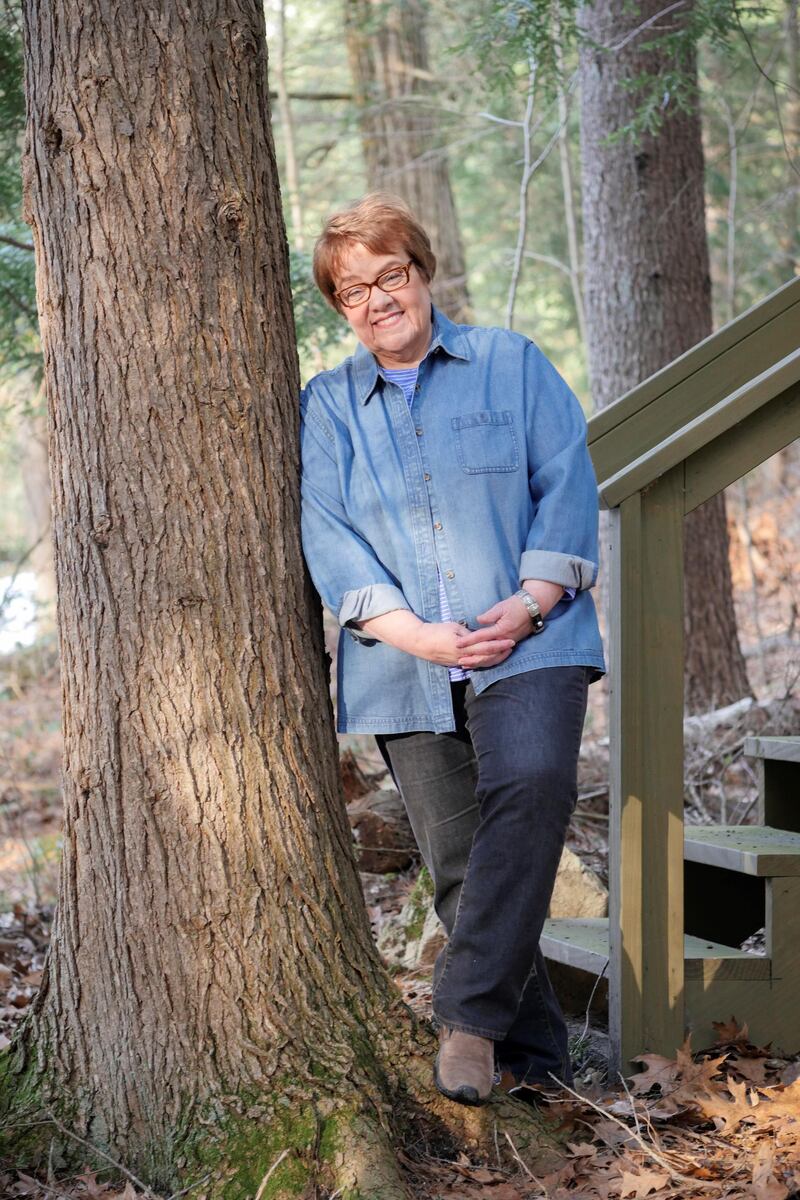"On the surface," writes Martha Ackmann in her epigrammatic and often startling new book These Fevered Days, "Emily Dickinson lived an ordinary life: she resided in one town, went to school, never held a job, living in her parents' home, remained single, and died at age 55."
She seldom went out, socialised only awkwardly, was prone to hypochondria and, after brief forays in the outside world – Amherst Academy when she was a child, Mount Holyoke Female Seminary for less than a year – she retreated more or less entirely to her bedroom, and to her own tangled, fiery thoughts.
By the time of her death on May 15, 1886, she had been spurning normal human social contact for so long that she was well-known in town as an odd recluse. She’d published only a few poems in her lifetime, all of them anonymously. She was buried alongside her parents in Amherst, and that might well have been the end of a very thwarted little story.
Ackmann, a past president of the Emily Dickinson International Society who has conducted many seminars at the Emily Dickinson Museum in Amherst, Massachusetts, acknowledges in passionate and sometimes soaring prose that the enormous majority of such a life was intensely subjective and inward. "She loved passionately, wrote scores of letters, anguished over abandonment, fought with God, found ecstasy in nature, embraced seclusion, was ambivalent towards publication, and created 1,789 poems that she tucked in a dresser drawer." The episodic structure of These Fevered Days, with each of 10 chapters providing a dramatic reconstruction of pivotal moments in the poet's life, is both an innovative approach and a tacit acknowledgement of just how dull the famous American poet's day-to-day existence would have looked to the outside observer. The moments Ackmann has chosen to highlight are most of the times when her subject actually did anything.
Chapter three, for instance, describes all that can be known of the events surrounding the publication of Dickinson's first poem, in the Springfield Daily Republican, when she was 21. She'd written the piece as a parody of the syrupy Valentine's Day verse of the time, sent it to the paper as a lark and was startled to see it published – anonymously and without her consent – in a paper with a wide-reading audience. Ackmann skilfully captures every detail of the incident that can be reclaimed, but even so, the chapter has room for flourishes of supposition ("Emily couldn't help looking at the sky that day. It had been dazzling lately.")
What did Emily Dickinson dream about? Rye fields, bees and pond lily stems, unveiling a statue, and once, she said, “a sherbet dream.” What else? Look for the answers in THESE FEVERED DAYS coming Feb. 25. pic.twitter.com/XMoHb6jhOH
— Martha Ackmann (@MarthaAckmann) January 24, 2020
When Dickinson was 31, she took what Ackmann describes as "the uncharacteristic step" of sending some of her poems to Thomas Wentworth Higginson, a prominent Boston literary figure who'd recently written an encouraging story for up-and-coming writers in The Atlantic Monthly. After a correspondence, she eventually met Higginson, talked a great deal of nonsense and gave him a gift: a photograph of Elizabeth Barrett Browning's grave. As Ackmann diplomatically puts it: "He accepted the gift reluctantly, knowing it probably meant more to her than it would to him." The unavoidable lasting impression is of a busy, supportive professional man of letters having an intensely stilted and embarrassing encounter with an eccentric young lunatic.
This is not the Dickinson that Ackmann wants to portray, and this narrative tension has been the defining characteristic of the poet – people always want her to be different than she actually was. The Victorians wanted her to be more coherent and conventional – which is why, when Higginson helped publish the first posthumous collection of her poems in 1890, he liberally changed these brilliant, utterly original works to fit Victorian sensibilities, regularising punctuation and even rewriting lines in order to make her resemble all the other "lady poets" of the era.
This narrative tension continues right up to the present, with Apple TV's 2019 series Dickinson, starring Hailee Steinfeld as a feminist tomboy, who dispenses cuttingly sarcastic quips at the drop of a hat, and joins the boys in flailing dance moves. Steinfeld's performance is high-spirited, but as a depiction of Dickinson it might as well include spaceships and ray guns.
In his great 2001 biography of Dickinson, My Wars Are Laid Away in Books, Alfred Habegger notes "the dubiousness of construing this profoundly one-of-a-kind writer by first enrolling her in any group at all, whether it is the contemporary group of close female friends or the future group of detached modernists", and it's to Ackmann's credit that she largely avoids this kind of false categorising, although arranging a biographical treatment of a tedious recluse into a string of 10 dramatically charged moments might itself be a kind of false category.
“Home to her was much more [than merely Amherst],” Ackmann writes. “It was the wild terrain of her mind. A world of hummingbirds and crickets and alabaster dots on a disc of snow.”
That wild, impressionistic world is conveyed more vividly in These Fevered Days than it could possibly be in a longer, more inclusive biography. But Emily still insists on keeping her own time.







